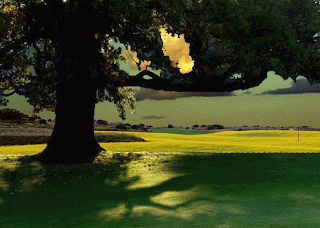Do owls, those enigmatic nocturnal raptors, consume other birds? The query itself seems almost sacrilegious, challenging our perception of the avian world as a unified, harmonious entity. Yet, the answer, unearthed from the annals of ornithological research and the observations of dedicated field biologists, reveals a more complex, sometimes brutal, reality. Indeed, owls, many of them, are not averse to including feathered brethren in their dietary repertoire.
I. The Predatory Profile: Dissecting the Owl’s Hunting Aptitude
Owls, by dint of evolutionary design, are apex predators. Their morphology, a symphony of adaptations, speaks volumes about their role in the ecosystem. Let us consider the following aspects:
A. Acute Auditory Acuity: A Sonic Sensory Net
Many owl species possess asymmetrical ear placement. This seemingly minor anatomical quirk allows them to triangulate the precise location of prey, even when concealed beneath a blanket of snow or dense vegetation. This auditory prowess extends to detecting the faintest rustling, a critical advantage in the cloak of night.
B. Silent Flight: The Art of Stealth
The leading edges of an owl’s flight feathers are fringed with comb-like structures known as fimbriae. These fimbriae disrupt the airflow, minimizing turbulence and rendering their flight virtually silent. This stealth allows them to approach unsuspecting prey undetected, a veritable phantom of the night sky.
C. Talons of Tenacity: Implements of Capture
An owl’s talons are not mere appendages; they are specialized tools for grasping and dispatching prey. Sharp, curved, and incredibly powerful, these talons can exert tremendous pressure, quickly subduing even relatively large birds. The zygodactyl arrangement of their toes, with two facing forward and two backward, provides an unparalleled grip.
D. Nictitating Membrane: A Protective Shield
Owls possess a nictitating membrane, a translucent third eyelid that sweeps across the eye from the side. This membrane serves multiple purposes, including protecting the eye during hunts and maintaining moisture. It’s a crucial adaptation for preserving vision in challenging conditions.
II. Avian Appetites: Which Owls Indulge in Feathered Fare?
Not all owls are created equal, nor do they all share the same culinary inclinations. Certain species exhibit a proclivity for avian prey, while others focus on rodents, insects, or even fish. Understanding these dietary distinctions is key to unraveling the avian cannibalism puzzle.
A. The Great Horned Owl: A Versatile Voracity
The Great Horned Owl, *Bubo virginianus*, is a notorious generalist predator, consuming a vast array of prey items. Its diet includes everything from voles and rabbits to squirrels and, yes, other birds. Crows, pigeons, waterfowl, and even smaller raptors like kestrels are all potential victims. Their size and strength makes them formidable hunters.
B. The Barn Owl: Rodent Specialist, Occasional Opportunist
While primarily a rodent specialist, the Barn Owl, *Tyto alba*, will occasionally supplement its diet with birds, particularly when rodent populations are scarce. Smaller passerines, like sparrows and starlings, are the most likely avian targets. They are adaptable predators when necessary.
C. The Snowy Owl: Arctic Hunter, Bird Binge
The Snowy Owl, *Bubo scandiacus*, inhabiting the Arctic tundra, primarily preys on lemmings. However, during periods of lemming scarcity, they may turn to other food sources, including birds. Seabirds, waterfowl, and even ptarmigan become fair game in the harsh Arctic environment.
III. The Motivations Behind Avian Predation: Why Birds Eat Birds
The consumption of birds by owls is not a random act of avian aggression. It is driven by a complex interplay of ecological factors and survival imperatives.
A. Nutritional Necessity: Energy Demands and Prey Availability
Owls, like all predators, require a certain amount of energy to survive and reproduce. When preferred prey items are scarce, they may be forced to broaden their diet to include whatever is available, even if that means preying on other birds. Larger birds provide substantial caloric intake.
B. Competition and Territory: Dominance Dynamics
In some instances, owls may prey on other birds to eliminate competition for resources or to defend their territory. This is particularly true of larger owl species that compete with other raptors for nesting sites and hunting grounds.
C. Opportunistic Carnivory: Seizing the Moment
Owls are, by nature, opportunistic predators. If they encounter a bird that is injured, weakened, or otherwise vulnerable, they are unlikely to pass up the opportunity for an easy meal. This can include scavenging on already deceased birds.
IV. The Ecological Ramifications: A Balancing Act
The predation of birds by owls has significant ecological implications, influencing population dynamics and shaping the structure of avian communities.
A. Population Regulation: Top-Down Control
Owls, as apex predators, exert top-down control on the populations of their prey, including other birds. This helps to maintain balance within the ecosystem, preventing any one species from becoming overly dominant.
B. Evolutionary Pressure: Adaptations and Counter-Adaptations
The threat of owl predation has driven the evolution of various anti-predator adaptations in other bird species, such as alarm calls, flocking behavior, and cryptic plumage. This creates an ongoing evolutionary arms race between predator and prey.
C. Ecosystem Health: Indicator Species
The presence and health of owl populations can serve as an indicator of overall ecosystem health. Declines in owl populations may signal underlying environmental problems, such as habitat loss, pesticide contamination, or prey depletion.
In conclusion, the question of whether owls eat other birds is answered resoundingly in the affirmative. It is a testament to the complex and sometimes surprising dynamics of the natural world, a reminder that even within the seemingly harmonious realm of birds, the law of the predator reigns supreme.
